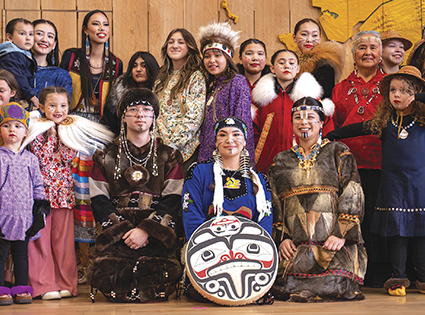National Native American and Alaska Native Heritage Month
November is an important month in the United States, as it marks National Native American and Alaska Native Heritage Month, a time when we pay tribute to the diverse and significant contributions of Native peoples to the country’s history and culture. From the early days of recognizing “American Indian Day” in New York to the establishment of this month-long celebration, it’s an opportunity for us all to learn more about the rich heritage of these communities and the impact they have moving the country forward.
The journey to establish National Native American Heritage Month began as early as 1916 when New York became the first state to declare an “American Indian Day.” However, it wasn’t until a few decades later in 1976, during the nation’s bicentennial commemoration, President Gerald Ford proclaimed October 10-16, 1976, as “Native American Awareness Week.” The month-long celebration of Native culture didn’t start until 1990, when President George H. W. Bush signed into law a joint resolution designating the entire month of November as National American Indian Heritage Month. This significant recognition highlighted the essential and unique contributions Native American people have made to the country and called upon various entities to observe the month with appropriate programs, ceremonies, and activities. In 2008, this commemorative language was amended to also include the contributions of Alaska Natives, making it National Native American and Alaska Native Heritage Month, and since then, whether by statute and/or presidential proclamation, the month of November is celebrated as a time to honor and learn about these rich cultures. The contributions of Native Americans to the United States extend beyond culture and traditions. Several Native American individuals have held prominent positions in politics. Charles Curtis of Kansas and Robert Owen of Oklahoma, both of Native American descent, served as senators in 1907. In 1993, Ben Nighthorse Campbell of the Northern Cheyenne Tribe became the third senator of Native American descent. Campbell was the first American Indian to chair the Senate Indian Affairs Committee. More recently, in 2022, Mary Peltola became the first Alaska Native member of Congress and, in 2023, Markwayne Mullin of Oklahoma, an enrolled member of the Cherokee Nation, became the fourth senator of Native American descent, further highlighting the influence of Native Americans in shaping the nation’s political landscape. Alaska is home to a diverse range of Native cultures. These groups include the Iñupiat & St. Lawrence Island Yupik in the Arctic region, Athabascan in Southcentral and Interior Alaska, Yup’ik & Cup’ik, Unangax̂, and Sugpiaq (Alutiiq) in Southwest Alaska, and Eyak, Haida, Tsimshian, and Tlingit in the Inside Passage among many others. These Alaska Native cultures have a profound influence on the state’s way of life, from the names of natural landmarks to the art, architecture, and culture of its cities and are vital for Alaska’s unique, resilient, and beautiful spirit. It’s important to continue learning about indigenous culture. They have often been marginalized from history and still are affected by structural issues. But the more we know about them, the more we can help. To gain a deeper understanding of Native American and Alaska Native cultures, there are various resources available for all to explore. The Smithsonian Museum of the American Indian offers “Native Knowledge 360° (NK360°),” providing educators and students with comprehensive information about Native American history and cultures. NK360° challenges common assumptions about Native peoples and offers a view that includes not only the past but also the vibrancy of Native peoples and cultures today. In addition, “Indigi-Genius,” a series from New Mexico PBS, delves into the scientific and cultural impact of Indigenous creations and knowledge, offering a unique perspective on Indigenous cultures from around the world. In addition, “A Qayaq to Carry Us” explores the Sugpiat community in Alaska, showcasing the merging of Indigenous knowledge with western science. For a more engaging and educational experience, the children’s show “Molly of Denali” follows ten-year-old Molly Mabray and her family, as they explore the Alaska Native culture, providing a fun and informative platform for learning. National Native American and Alaska Native Heritage Month is a time for us all to recognize the enduring contributions of Native peoples to our nation’s history, culture, and political landscape. Let’s take this opportunity to learn more, challenge our assumptions, and appreciate the vibrancy of Native cultures today. |
